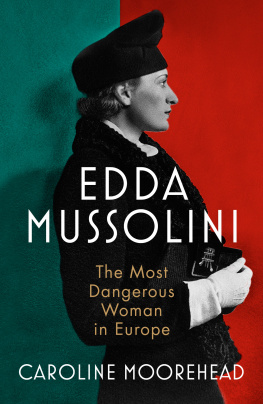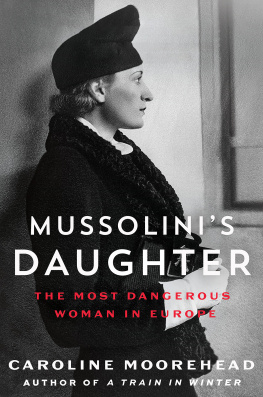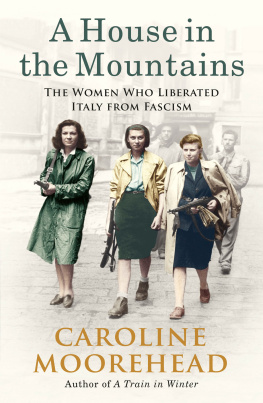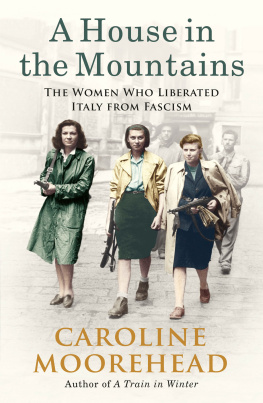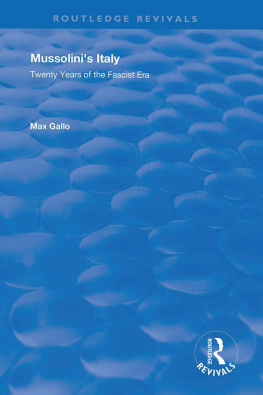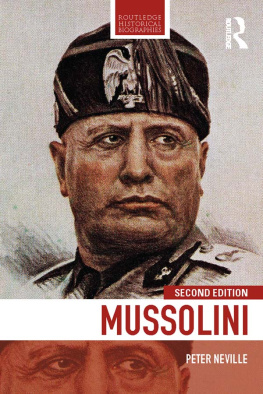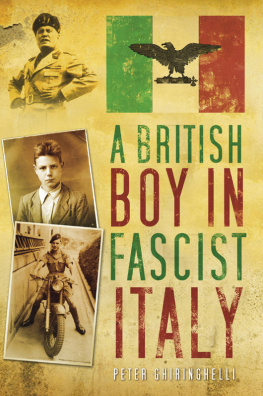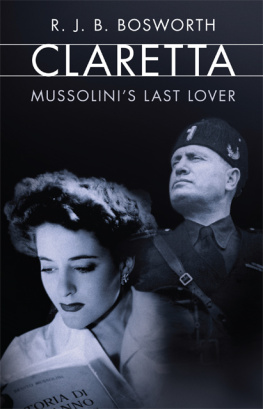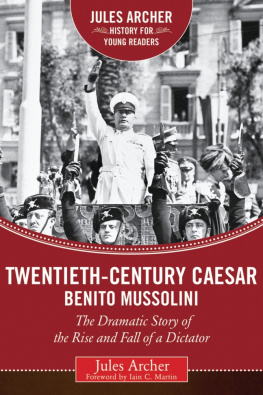BY THE SAME AUTHOR
Fortunes Hostages
Sidney Bernstein: A Biography
Freya Stark: A Biography
Over the Rim of the World: The Letters of Freya Stark (ed.)
Troublesome People
Betrayed: Children in Todays World (ed.)
Bertrand Russell: A Life
The Lost Treasures of Troy
Dunants Dream: War, Switzerland and the History of the Red Cross
Iris Origo: Marchesa of Val dOrcia
Martha Gellhorn: A Life
Human Cargo: A Journey among Refugees
The Letters of Martha Gellhorn (ed.)
Dancing to the Precipice: Lucie de la Tour du Pin and the French Revolution
A Train in Winter: A Story of Resistance, Friendship and Survival
Village of Secrets: Defying the Nazis in Vichy France
A Bold and Dangerous Family: The Rossellis and the Fight Against Mussolini
A House in the Mountains: The Women who Liberated Italy from Fascism
Footnotes
6: La prima signora di Shanghai
In 1936, the Young Marshal, having thrown his lot in with the Kuomintang, had Chang Kai-shek kidnapped, earning a stern rebuke from Ciano. When he agreed to release him, he was himself arrested and spent many years in jail.
10: The most influential woman in Europe
Malaparte, who later had a sauna with Himmler, described a gathering of ten naked men, all with fat breasts and flesh that looked like lobster, pale and rosy, exuding a crustacean smell with grim hard faces, sweaty, flabby and freckly, using switches with which to beat each other.
12: Death comes to Rome
Martha Dodd, the American journalist in Germany, humorously said of the vast, paunchy ambassador that sparring with him would have been like licking an elephants tail.
17: Death walks on the roof
A cold strong northern wind from the Alps.
18: What have we become?
Of the 1,023 deported, 207 were children. Only fifteen men and one woman survived.
Caroline Moorehead
EDDA MUSSOLINI
The Most Dangerous Woman in Europe

VINTAGE
UK | USA | Canada | Ireland | Australia
New Zealand | India | South Africa
Vintage is part of the Penguin Random House group of companies whose addresses can be found at global.penguinrandomhouse.com.

First published by Chatto & Windus in 2022
Copyright Caroline Moorehead, 2022
The moral right of the author has been asserted
Cover design by Stephen Parker
Cover Portrait of Edda Mussolini by Ghitta Carell Getty Images
ISBN: 978-1-473-57211-9
This ebook is copyright material and must not be copied, reproduced, transferred, distributed, leased, licensed or publicly performed or used in any way except as specifically permitted in writing by the publishers, as allowed under the terms and conditions under which it was purchased or as strictly permitted by applicable copyright law. Any unauthorized distribution or use of this text may be a direct infringement of the authors and publishers rights and those responsible may be liable in law accordingly.
For Wolf and Basil
The Gods move very fast when they bring ruin on misguided men.
Sophocles, Antigone
Principal Characters
The Mussolini family
Benito Mussolini, dictator 28 October 192225 July 1943 head of the Sal republic October 194325 April 1945
Alessandro and Rosa, his parents
Rachele, his wife
Arnaldo, his brother
Edvige, his sister
Edda, his daughter, married to Galeazzo Ciano
Vittorio, Bruno, Romano, his sons
Anna Maria, his daughter
Claretta Petacci, his last lover
The Ciano family
Costanzo Ciano, patriarch and supporter of Mussolini
Carolina, his wife
Galeazzo, his only son
Maria, his daughter
Fabrizio, Raimonda and Marzio, Edda and Galeazzos children
The gerarchi
Roberto Farinacci, vulgar, corrupt and cynical ras of Cremona
Augusto Turati, suave party leader
Achille Starace, devoted Mussolini acolyte and enforcer of Fascist behaviour
Giuseppe Bottai, the most cultured of the gerarchi
Dino Grandi, ambassador to London
Other Characters
Eugen Dollmann, SS officer and interpreter
Curzio Malaparte, author, and friend of Galeazzos
Emilio Pucci, devoted companion to Edda
Leonida Buongiorno, Eddas lover on Lipari
Isabella Colonna, doyenne of Roman society
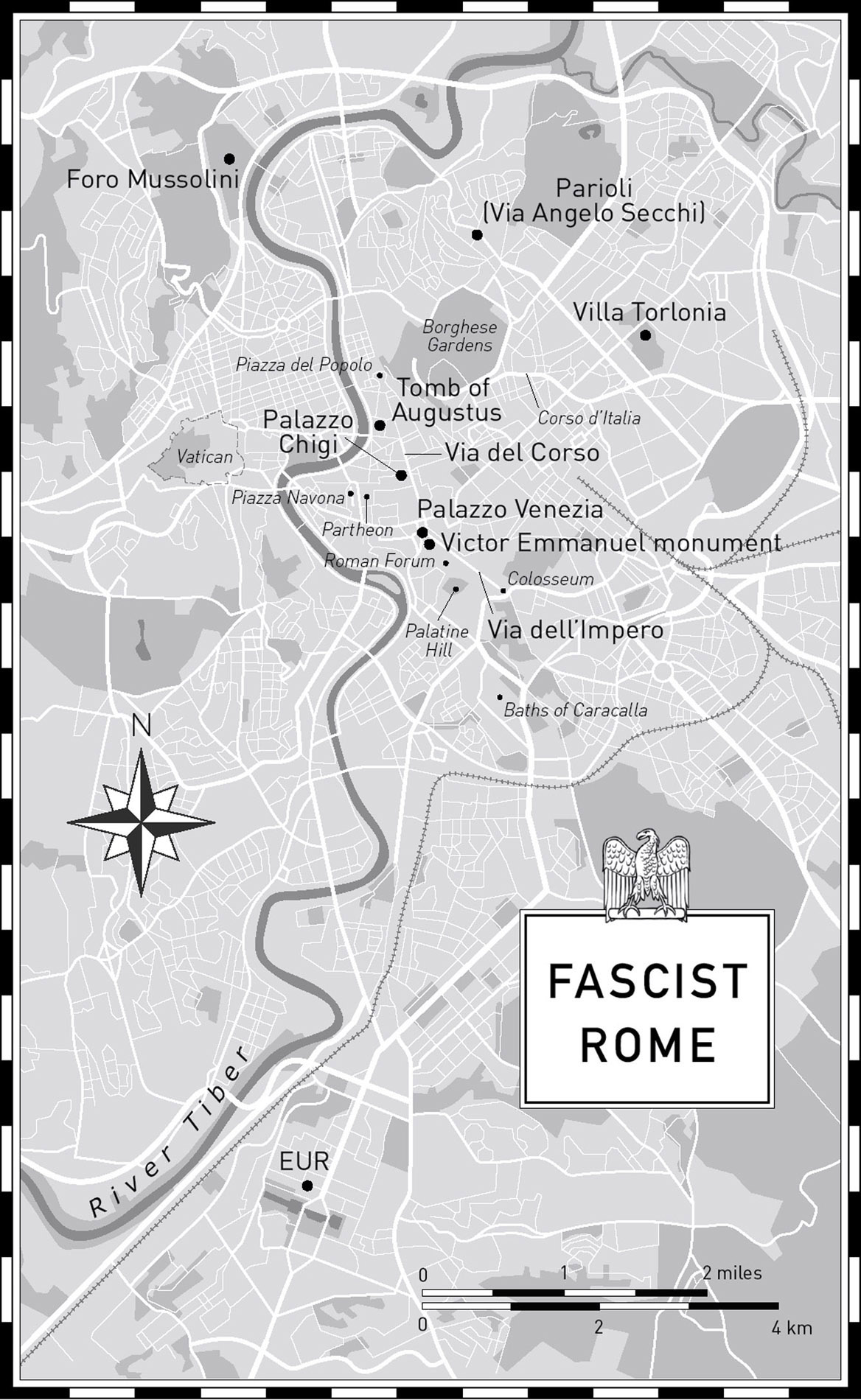
Foreword
The Villa Carpena was the Mussolini family home. An ochre stuccoed square house, it stands behind iron gates, with two immense bronze eagles, their wings outstretched, outside Forl in Emilia Romagna, in northern Italy, not far from the hamlet of Predappio where Mussolini was born and grew up. Rachele, the Duces wife, lived in the villa until her death in 1979. It is now a museum, with something of a used-car lot about its surroundings, since over the years the family possessions have been discovered and brought back: rusty cars and bicycles, the tractor which Mussolini took pride in driving during his occasional holidays from Rome, even a small aeroplane he once piloted.
The neglected garden is laid out with paths, marked by lines of small white stones, each bearing the name of one of Mussolinis senior Fascists, and in-between stand life-sized statues in the classical style. There is a stone cottage, built on a miniature scale, in which his children played; the benches on which Mussolini and Rachele sat; the gravestones of the many dogs and cats owned by the family. The gift shop sells Mussolini memorabilia: mugs, plates, aprons, knives and even teapots engraved with Fascist insignia; busts of the Duce in a hundred different heroic poses; replicas of the caps and hats worn by him; books and framed pictures; knives. In the niche by the front door stands the statue of a Roman matron, clutching to herself a sheaf of corn, but otherwise naked. A pair of peacocks was introduced some years ago and their many descendants, some of them pure white, utter their raucous and eerie cries from somewhere behind the trees.
But it is the villa itself that is the true shrine to a cult that has now endured for almost a century. When Rachele was allowed to return here in the 1950s, she devoted herself to retrieving the many possessions looted from the house in the closing months of the war. Placing a chair by the gates, she sat and waited; sheepish neighbours appeared with a plate, a sewing machine, a cup. Mussolinis motorbike stands in the narrow hall, by the side of the primitive switchboard on which his aides fielded his calls. In his small dark study there are his caps, medals, trophies, pens, inkstands. In Racheles modest kitchen, restored to its state during the years she rolled the pasta by hand on the travertine table, gleam rows of copper pots on the walls. Everything is dark, pokey, covered in a thick layer of dust, with very little light coming from the small-paned windows.
On the first floor are the bedrooms, each door marked with the name of a Mussolini child. On the bed in Mussolini and Racheles room lies one of his many khaki uniforms, complete with fez and dagger, laid out as if waiting for his return. Edda, his eldest and favourite child, had her room at the front, overlooking the courtyard. Her bed has a white cotton cover, and on the pillow lies a doll in a frilly dress, with a worn ceramic face. The 1930s art deco cupboard contains some of the dresses, with their bold patterns, big shoulders and pinched waists, that she wore as an adult when her clothes were the models for chic Fascist women. On the dressing table are little trinkets and bric-a-brac that might have come from village fairs.

